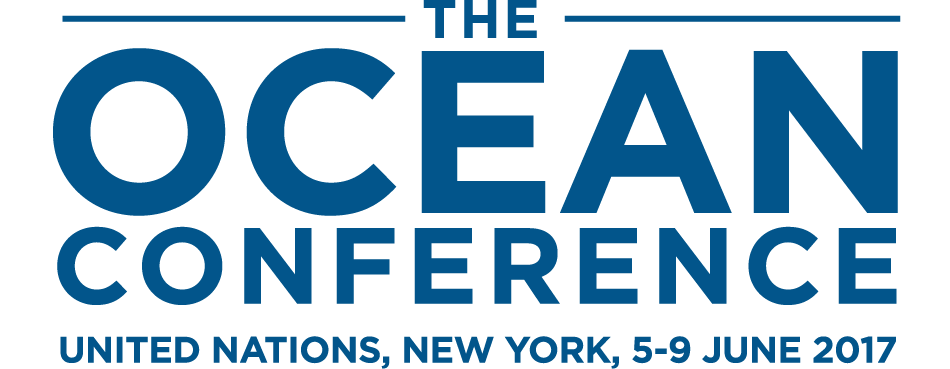Daily report for 28 September 2017
1st Meeting of the Conference of the Parties to the Minamata Convention on Mercury (COP1)
On Thursday, the Minamata COP1 High-Level Segment convened in the afternoon, with high-level delegates meeting in an opening ceremony, convening in eight ministerial roundtables and attending a ministerial dinner in the evening.
The Committee of the Whole (COW) convened in the morning to hear progress reports, and in afternoon to recommend draft decisions to the COP.
An open-ended meeting of the Friends of the Chair group on secretariat functions met briefly to report on the outcome of bilateral meetings. Contact groups on reporting, and programme of work and budget convened at various points during the day.
The COP held a “Moment for Minamata” over lunch time, and attended a high-level event hosted by the Global Environment Facility (GEF) on implementation of the Minamata Convention.
HIGH-LEVEL SEGMENT
Jacob Duer, Principal Coordinator of the interim Secretariat of the Minamata Convention, opened the high-level segment, acknowledging the presence of two Heads of State and Government, and 80 Ministers.
Doris Leuthard, President of the SwissConfederation and Minister for the Environment, Transport, Energy and Communication, noted that the Minamata Convention is a celebration of a global solution and is a success story for multilateralism. She highlighted the fact that the Minamata Convention was the first multilateral environmental agreement negotiated in the 21st century, noting that it builds upon elements already present in other agreements in the chemicals and wastes cluster. She shared Switzerland’s implementation of the provisions of the Convention, and called on all countries with the ability to do so to contribute to the Financial Mechanism. Emphasizing that the Convention needs strong implementation assistance, Leuthard announced that Switzerland would contribute US$1million to the specific international programme (SIP) pending a good outcome on the permanent secretariat of the Convention.
Erik Solheim, Executive Director, UN Environment, expressed gratitude to those who had helped shape the Convention, including those who had suffered under the weight of Minamata disease and thus created awareness of the dangers of exposure to mercury. Stating that the Convention is a “triumph of multilateralism,” he said that the global community can solve any environmental problem by working together. He acknowledged the political will of several governments in the fight against pollution, including the governments China, Chile, Kenya, Rwanda and Guyana. He reported that the theme of the UN Environment Assembly in December is “beat pollution,” and urged countries to work towards a pollution-free planet.
The high-level segment then broke into eight ministerial roundtables where Ministers engaged in closed-door interactive discussions around the themes of mercury in land, air and water. At each roundtable, Ministers designated a representative to report back to the COP on the “action messages” on Friday morning.
COW
In the morning, the COW met to hear progress reports from the contact and informal groups. On reporting and the effectiveness evaluation, contact group Co-Chair Silvija Kalniņš, Latvia, reported that the group had reached agreement on the effectiveness evaluation, including the establishment of an ad hoc expert group on the arrangements for providing the COP with comparable monitoring data, and elements of an effectiveness evaluation framework. She requested more time for the group to finalize the draft decision.
On the financial mechanism, contact group Co-Chair Gillian Guthrie, Jamaica, reported that the group had finalized a draft decision on the SIP with a paragraph where bracketed text remains in the section on eligibility. She noted that one country had reservations on two of the appendices pending the outcome of the discussions about the permanent secretariat. On the MoU with the GEF Council, contact group Co-Chair Gregor Filyk, Canada, indicated that two delegations including one party proposed changes to the draft MoU and draft decision. IRAN stressed the importance of the GEF in assisting developing countries to implement the Convention, and lamented that several projects submitted by his country had been rejected by the GEF Council “for political reasons.” Supporting Iran, the RUSSIAN FEDERATION called for including text in the MoU with the GEF on the need to “limit the politicization of GEF project funding.” EL SALVADOR called for financial support to eradicate mercury contamination in small developing countries.
On technical issues, contact group Co-Chair Teeraporn Wiriwutikorn, Thailand, reported that the group had finalized a draft decision on waste thresholds including the work needed in the intersessional period between COP1 and 2.
Reporting on the Programme of Work and budget, Co-Chair Reginald Hernaus, the Netherlands, noted detailed discussions concerning the secretariat and costs for the organization of the second and third COPs, preparatory meetings and intersessional meetings of expert groups. He noted that discussions on the SIP and on staff costs did not take place as there was no consensus on those matters in the contact group on financial mechanism or the Friends of the Chair, respectively, on the secretariat arrangements, and therefore requested more time to for the group to meet.
On regional centres, María Florencia Grimalt, Argentina, Facilitator of the informal consultations, reported that the consultations on CRP.7 on the regional and sub-regional centres for capacity building, technical assistance and technology transfer on the Minamata Convention would be finalized later in the day and invited interested parties to continue to approach her for informal discussions.
On secretariat arrangements, Co-Chair of the Friends of the Chair group, Yingxian Xia, China, reported on informal consultations and requested more time for the group to consider the outcome of bilateral meetings. He emphasized that the outcome document was “a delicate balance.” COW Chair Lugris announced that an open-ended meeting of the Friends of the Chair group would convene to hear progress on bilateral deliberations in the morning.
In the afternoon, the COW adopted its draft report (UNEP/MC/COP.1/CW/L.1).
MATTERS FOR ACTION BY COP1: Matters Stipulated under the Convention: Financial Mechanism: The COW approved the draft decision on the guidance to the GEF (UNEP/MC/COP.1/CRP/16), and forwarded it to the plenary for formal adoption.
Reporting: The COW approved the draft decision on reporting (UNEP/MC/COP.1/CRP/17), and forwarded it to the plenary for formal adoption.
Effectiveness Evaluation: The COW approved the draft decision on effectiveness evaluation (UNEP/MC/COP.1/CRP/19), and forwarded it to the plenary for formal adoption.
MATTERS RECOMMENDED BY THE INC: Open Burning: The COW approved the draft decision on mercury emissions related to open burning of waste (UNEP/MC/COP.1/CRP/13), and forwarded it to the plenary for formal adoption.
MATTERS STIPULATED BY THE CONVENTION FOR ACTION BY THE COP: Mercury Releases: The COW approved the draft decision on guidance in relation to releases (UNEP/MC/COP.1/CRP/18), and forwarded it to the plenary for formal adoption.
Interim Storage: The COW approved the draft decision on the draft guidelines on interim storage of mercury and mercury compounds (UNEP/MC/COP.1/CRP/10), and forwarded it to the plenary for formal adoption.
Waste Thresholds: The COW approved the draft decision on the definition of mercury waste thresholds (UNEP/MC/COP.1/CRP/15), and forwarded it to the plenary for formal adoption.
Contaminated Sites: The COW approved the draft guidance on the management of contaminated sites (UNEP/MC/COP.1/CRP/9), and forwarded it to the plenary for formal adoption, with delegates agreeing to task the secretariat to update the annexes, and also agreeing that the COP “decides” rather than “agrees” to develop draft guidance on managing contaminated sites.
CONTACT GROUPS
FINANCIAL RULES, PROGRAMME OF WORK AND BUDGET: The group met in two sessions during the day. During the first session, discussions continued on the costs of COP2 and COP3 meetings, regional preparatory meetings and intersessional time-based expert groups mandated by the first and second meetings. The interim Secretariat presented a comparative analysis between the Minamata budgeted costs for COP2, and historical and comparable BRS COP costs in Geneva. Delegates discussed the proposed costs, considering the possibility of reducing interpretation hours, the potential of shortening COP2 meeting days and overall venue costs.
Agreement emerged for the meetings package for COP2 that would include: 300 pages of pre-session documents; 11 sessions of interpretation; 5-day duration of the COP; 6 days at the venue; 100 pages of in-session documents; and 170 pages of post-session documents. Delegates debated the need for a contingency line in the meetings package, and agreed to add 7% contingency to the security budget line.
REPORTING: On Thursday morning, the contact group on reporting met to finalize the draft decision on the effectiveness evaluation. Participants quickly reached agreement on the final text and decided to forward the draft decision to the COP for adoption.
IN THE CORRIDORS
The penultimate day of the COP started with work at the CICG and ended with celebration at the Palais des Nations. To start the day, many heard of successes and struggles in the late-night contact group meetings, but focus was largely on the secretariat arrangement talks. Many delegates held their breath in an open-ended meeting of the Friends of the Chair group as the Co-Chairs announced an “agreement based on a very delicate balance” - a stand-alone secretariat in Geneva, with dedicated staff, but “heavily reliant” on the BRS Secretariat in some areas. In the brief discussion that ensued, some of the major players expressed their disappointment with this outcome from the bilaterals, which several characterized as having been “very passionate.” The passion was on more public display, as one country favored dedicated staff to assist countries to implement this “baby convention,” while another country highlighted the benefits of integrating into the BRS family’s experienced team. As delegates left the room to ruminate on the proposed compromise, one lamented the “non-inclusive, back-door deal,” while others welcomed the proposal, saying this is “what compromise looks like.”
In the celebration of the high-level segment, several delegates welcomed the break from the intense negotiations. Two delegates, especially relaxed because their ministers were not attending, reflected that this high-level segment may be particularly worthwhile, to draw attention to a new Convention governing an issue that rarely receives ministerial attention at home. It seems many were up for the education, as several ministers, and even UN Environment Executive Director Erik Solheim had their hair tested for mercury.
Work continued into the night, with the budget group instructed to get through the multiple aspects of their work that were still in contention. “We may be here all night,” sighed one delegate, marching up to the chocolate basket for the umpteenth time.
ENB SUMMARY AND ANALYSIS: The Earth Negotiations Bulletin summary and analysis of Minamata Convention COP1 will be available on Monday, 2 October 2017, online at: http://enb.iisd.org/mercury/cop1/
-->
Specific funding for coverage of the Ocean Conference - June 2017, has been provided by the
XXX, XXX, and XXX
-->
IISD Reporting Services is a division of the International Institute for Sustainable Development (IISD).
Earth Negotiations Bulletin (ENB), ENB+, and Knowledge Management for Sustainable Development
are branches within IISD Reporting Services.
© 1992-2017, IISD Reporting Services. All rights reserved.







